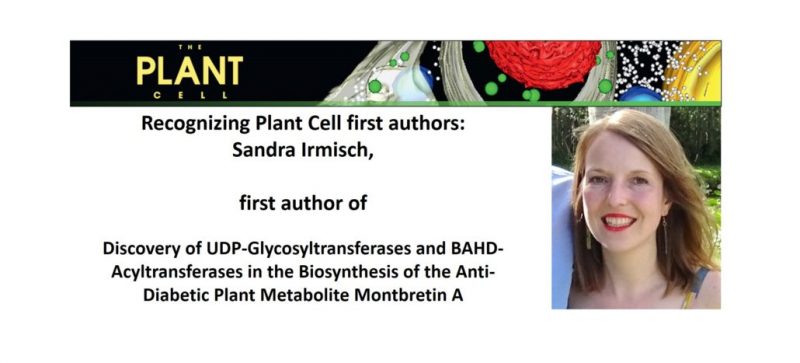Newsroom
A pretty plant of summer produces a promising anti-diabetes compound
Discovery of the biosynthetic pathway of a plant metabolite lays the groundwork for its use as an anti-diabetes drug
According to a new release by the American Society of Plant Biologists, roughly half of the western medicines used today were derived from naturally occurring plant metabolites. Plants produce over 200,000 of these specialized metabolites, but identifying medicinally useful ones is challenging, and obtaining sufficient quantities for human use poses an even greater challenge. Type-2 diabetes, a disease characterized by elevated blood glucose levels due to the body’s inefficient use of insulin, affects over 320 million people worldwide. Drugs that are commonly used to treat type-2 diabetes reduce blood glucose levels by inhibiting the activities of two enzymes: HPA (pancreatic alpha-amylase), which cleaves complex starches into strings of sugar molecules called oligosaccharides and alpha-glucosidases, which convert oligosaccharides into glucose in the gut. Unfortunately, the inhibition of alpha-glucosidases causes some undigested oligosaccharides to move into the lower bowel, leading to flatulence and diarrhea.
Ten years ago, in an effort to produce a diabetes drug that specifically inhibits HPA activity without having nasty side effects, scientists screened 30,000 extracts derived from plants and other organisms and found a single compound that fit the bill: montbretin A (MbA) from the bulb-like underground corms of the ornamental plant montbretia (Crocosmia x crocosmiiflora). Unfortunately, MbA can’t be produced in large quantities without understanding the biochemical pathway and genes involved in its biosynthesis, a difficult task considering the diversity and complexity of plant metabolic pathways.
Scientists from UBC, the Michael Smith Laboratories, and the Canadian Glycomics Network analyzed this crucial pathway, as discussed in this month’s issue of The Plant Cell. The scientists discovered the first three intermediate metabolites in the MbA biosynthesis pathway, including a product called mini-MbA, which also strongly inhibits HPA activity, as well as the four enzymes involved in mini-MbA production. Importantly, when they cloned the genes for these enzymes and used them to genetically transform wild tobacco, they successfully obtained mini-MbA. According to lead scientist Dr. Jörg Bohlmann of the Michael Smith Laboratories, “This is a fascinating example of the largely undiscovered potential of plant specialized metabolism that may lead to new treatments for the improvement of human health.”
Journal Reference:
- Sandra Irmisch, Seohyun Jo, Christopher R Roach, Sharon Jancsik, Macaire M.S. Yuen, Lina Madilao, Mark Mark O’Neil-Johnson, Russell Williams, Stephen G Withers, Joerg Bohlmann. Discovery of UDP-Glycosyltransferases and BAHD-Acyltransferases in the Biosynthesis of the Anti-Diabetic Plant Metabolite Montbretin A. The Plant Cell, 2018; tpc.00406.2018 DOI: 10.1105/tpc.18.00406
Read the Research Paper in The Plant Cell
First author, Sandra Irmisch of the Bohlmann lab, was also featured in Plantae. Click here to learn more about Sandra Irmisch and her research.
